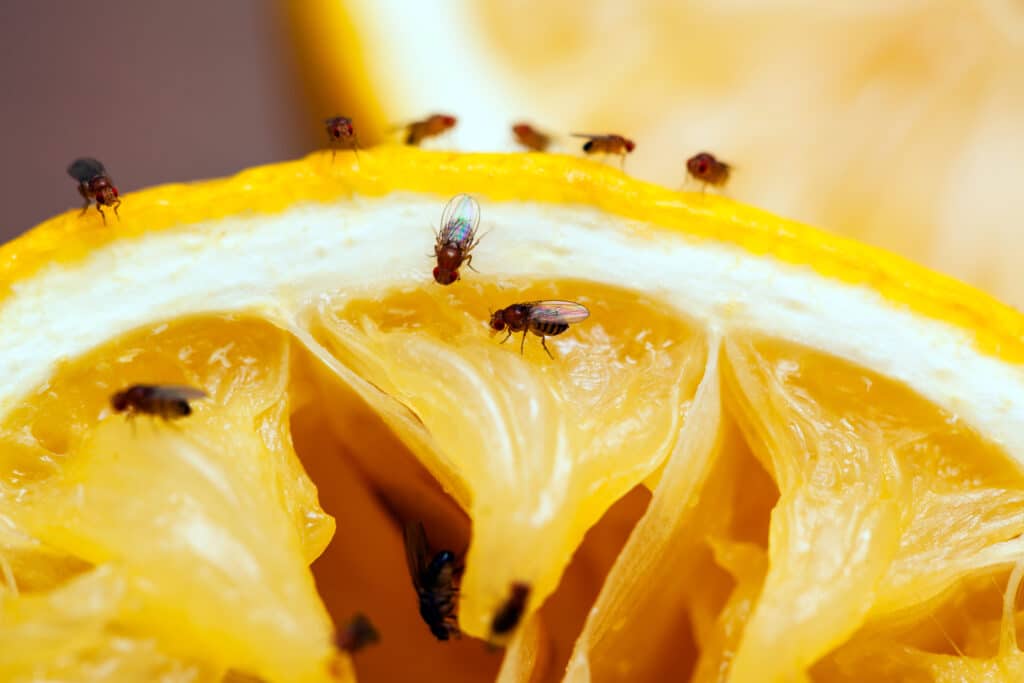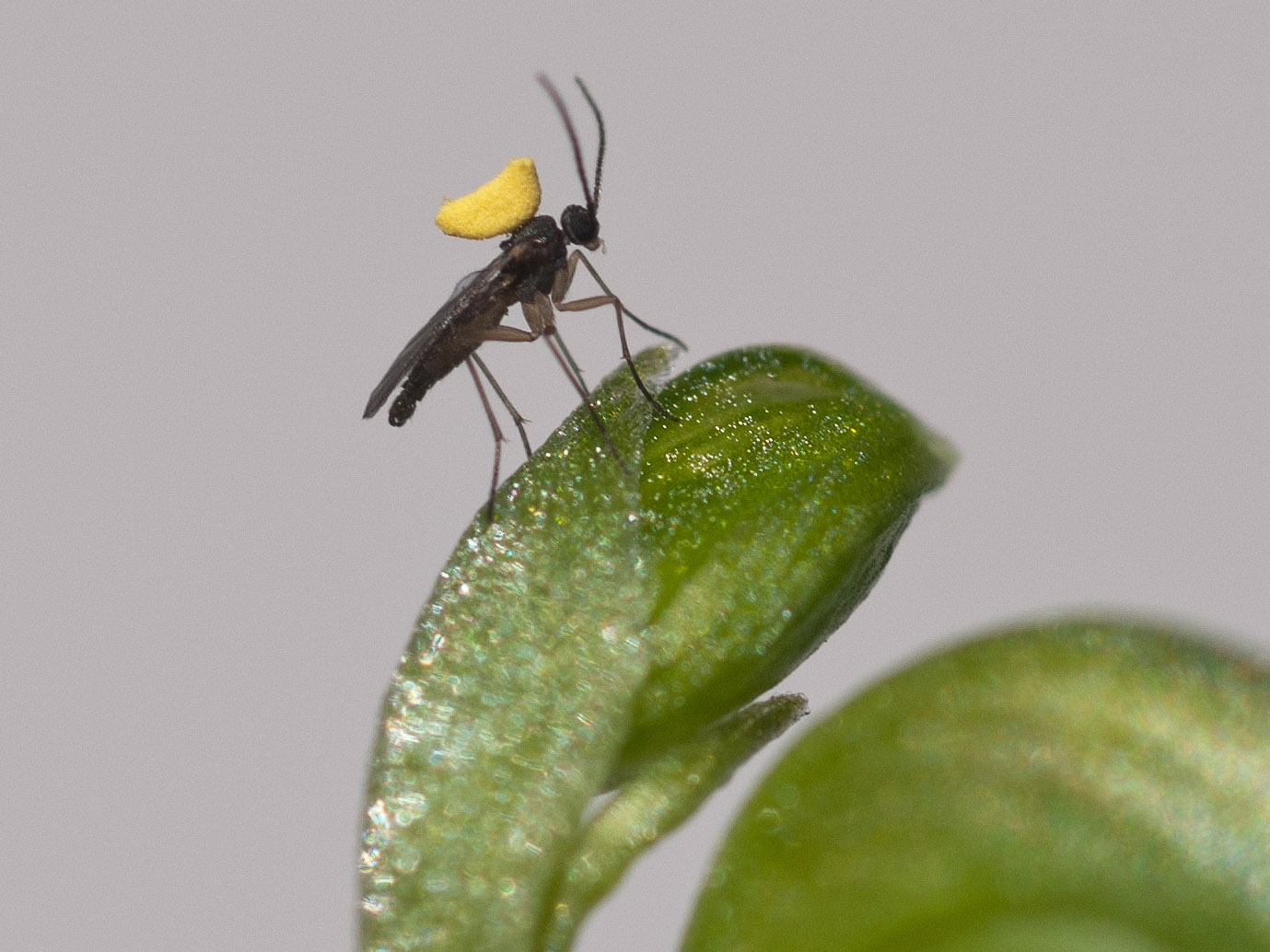Gnats play a crucial role in various ecosystems by serving as food sources, pollinators, nutrient cyclers, and indicators of environmental health.
This article explores the surprisingly important functions of these tiny insects.
Read on to learn more about what gnats do for the environment.
What Do Gnats Do for the Environment?

While gnats can be annoying to humans, they provide essential ecosystem services through pollination, nutrient cycling, food web contributions, and serving as indicators of environmental health.
Overall, gnats play an integral role in maintaining balanced ecosystems that all species depend on.
Key Points
- Gnats inadvertently pollinate plants and fungi as they seek nectar.
- Gnat larvae contribute to nutrient cycling by breaking down organic matter.
- Declining or increasing gnat populations can signify environmental changes.
- Gnats occupy diverse global ecosystems from rainforests to deserts.
How Do Gnats Fit Into the Food Chain?
Gnats are an important food source for larger predators like birds, spiders, amphibians, and small mammals.
Baby gnats and larvae are eaten by a wide variety of species, providing necessary protein and nutrients.
Adult gnats also feed larger insects and arthropods.
Without this food source, many small animals would struggle to survive.
Do Gnats Pollinate Plants and Crops?

Yes, gnats are pollinators for some plant species.
Though they don’t actively collect pollen like bees, gnats inadvertently transport pollen between flowers as they seek nectar.
This facilitates plant reproduction and healthy ecosystems.
Some species like fungus gnats are suspected of pollinating mushrooms and fungi.
Researchers believe gnats play a larger role as pollinators than previously thought.
How Do Gnats Contribute to Nutrient Cycling?
Similar to crickets, gnats are decomposers.
As decomposers, gnats and their larvae break down decaying organic matter like plant material and fungi.
This releases nutrients like nitrogen and phosphorus back into the soil to be reused by other plants and animals. Gnats fill an important niche in nutrient cycling within ecosystems.
Can Gnats Indicate Environmental Changes?
Since gnats are sensitive to environmental conditions like moisture, temperature, and toxins, their populations can signify changes in local habitats.
Declining or increasing gnat numbers may reflect issues like pollution, climate change impacts, or habitat loss.
Researchers use gnats as bioindicators to monitor wetlands, streams, and other ecosystems.
How Do Gnats Reproduce and Spread?
Gnats go through complete metamorphosis with four life stages – egg, larva, pupa, and adult.
After mating, female gnats lay eggs in damp environments near vegetation, water, or decaying matter.
Larvae hatch within days and feed on organic material before pupating.
Within a week or two, adult gnats emerge to mate and repeat the cycle. Migration and wind dispersal spreads gnats to new areas.
What Ecosystems Do Gnats Live In?
Gnats occupy a range of habitats across the globe, from rainforests to deserts.
Different gnat species thrive in specific environments with adequate moisture, shade, vegetation, and decaying matter to provide food and breeding sites.
Common gnat ecosystems include forests, grasslands, wetlands, and agricultural areas.
Some gnats have even adapted to live in human homes.
What Do Gnat Larvae Eat?
Gnat larvae feed on decaying plant matter, fungi, and microorganisms.
Fungus gnat larvae particularly favor mold and mushrooms.
Other species eat algae, leaf litter, and dead insects.
Certain predatory gnat larvae attack small invertebrates like protozoans, nematodes, rotifers, and other insect larvae.
The food source depends on the gnat species and habitat.
How Do Gnats Survive Winter?
Some temperate gnat species overwinter as larvae, pupating only when temperatures warm in spring.
Other gnats overwinter as adults, sheltering in leaf litter or under bark.
Migration allows certain gnats to escape harsh winters.
Gnats that remain active during winter survive by producing glycerol to act as an anti-freeze in their bodies.
This adaption allows them to withstand freezing temperatures.
What Threats Do Gnats Face?
Habitat loss from human activities like development, pollution, pesticide use, and climate change all pose threats to gnat populations globally.
Natural predators like birds also keep gnat numbers in check.
Parasitic fungi and nematodes can decimate gnat populations when environmental conditions facilitate spread.
Maintaining healthy ecosystems can help mitigate risks to gnats.
Why Is the Gnat Important?
Gnats play a vital role in ecosystems around the world.
Though small in size, these insects serve as a major food source for birds, fish, spiders, lizards, and frogs that help keep food webs balanced.
Gnat larvae in particular provide a rich source of protein and nutrients for developing chicks and other juvenile animals.
Adult gnats are also consumed by larger predators, continuing the chain of energy transfer up trophic levels.
Without gnats as prey, many small insectivorous animals would struggle to find adequate food to survive and reproduce.
Additionally, some gnats pollinate mushrooms, fungi, and rare plant species as they forage for nectar.
This inadvertent pollination facilitates reproduction in organisms that rely on gnats.
Overall, gnats fill an important niche across diverse ecosystems.
Their role may seem minor, but gnats have an outsized impact on community dynamics through energy transfer and pollination services.
Even pesky insects serve a purpose in the intricate webs of life.
How are Gnats Helpful to Humans?
Though seen as a nuisance, some gnat species do provide benefits to humans.
Certain fungus gnats are used to break down waste and compost organic matter rapidly.
The larvae of these species feed voraciously on decaying plant material, accelerating decomposition.
Fungus gnats may also have applications in forensic science, as their life cycles and habitats can provide clues about time and place of death in corpses.
Some predatory gnat larvae attack pest insects like root maggots, cabbage maggots, and sciarid flies.
This makes them potentially useful for biocontrol of agricultural and garden pests.
However, most gnat species have limited direct benefits for humans.
Their biggest contribution is maintaining balanced ecosystems through pollination, nutrient cycling, and participation in food webs.
Healthy ecosystems provide many indirect services like water filtration, erosion control, and aesthetic value that improve human lives.
What Are Gnats Classified As?
Gnats belong to the order Diptera, which includes all true flies.
Within this order, gnats are divided into several families, including Chironomidae (non-biting midges), Ceratopogonidae (biting midges), Anisopodidae (wood gnats), and Mycetophilidae (fungus gnats).
There are over 6,000 known gnat species worldwide exhibiting huge diversity.
Different gnat families have adapted to varied habitats and ecological roles.
Non-biting midge gnats are found near water, while fungus gnats thrive in leaf litter.
Biting midges prey on vertebrate blood, transmitting disease.
Other groups feed on plants, fungi, and decaying matter.
Even within families, gnats may look identical to the naked eye but represent distinct species.
While all considered gnats, these flies have diversified to occupy diverse environmental niches through specialized morphology and physiology.
However, they share common characteristics like small size, slender bodies, and one pair of clear wings.
Taxonomically, gnats provide an example of how evolution produces endless variation within an successful order.
Key Takeaways:
- Gnats may be pesky, but they serve important roles in food webs, plant pollination, soil nutrient cycling, and as indicators of environmental health.
- Understanding the contributions of small species like gnats can help us protect the intricate balance of diverse ecosystems that all life depends on.
FAQ
What Are Some Predators That Eat Gnats?
Birds, spiders, amphibians, reptiles, and small mammals all prey on gnats and gnat larvae. Even larger insects like dragonflies consume gnats. These predators help keep gnat populations in balance.
How Do Gnats Adapt to Different Environments?
Gnats adapt to varied environments through morphological, physiological, and behavioral changes. Desert gnats have reduced nostril size to retain moisture. Aquatic larvae have siphon tubes to breathe. Some gnats migrate to escape seasonal changes.
Why Are Fungus Gnats Associated With Mold Growth?
Fungus gnat larvae feed on fungi and help distribute mold spores. Their presence often indicates excessive moisture ideal for mold growth. Controlling moisture can help manage both mold and fungus gnats.
At GreenChiCafe, we are passionate about our amazing planet and protecting the natural world.
Check out our website for more content about gnats, ecology, and ways you can help the environment.
